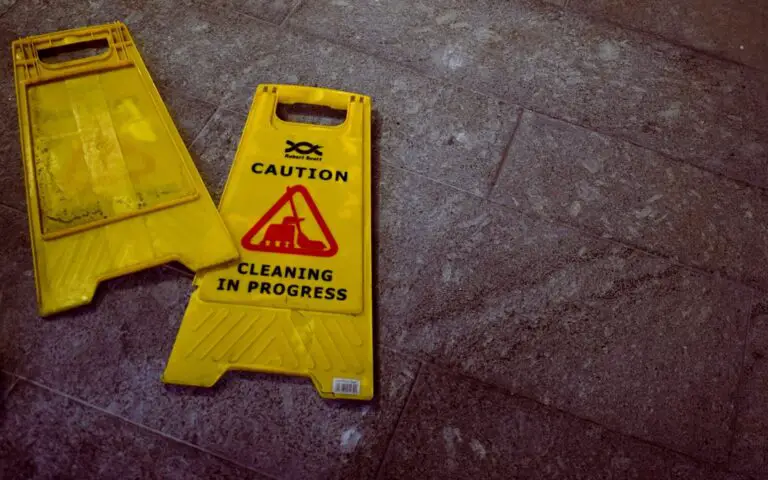Support our educational content for free when you purchase through links on our site. Learn more
What Is the Quietest Sone for a Bathroom Fan? Top 7 Picks (2025) 🤫
Ever wondered why some bathroom fans sound like a gentle whisper while others roar like a jet engine? The secret lies in the sone rating—a measure of how loud a fan actually is. In this comprehensive guide, we’ll reveal the quietest sone levels you can find in bathroom fans today, explain why sones matter more than decibels, and share our expert-tested top 7 ultra-quiet fans that will transform your bathroom into a peaceful oasis.
Here’s a fun fact: the quietest fans operate at around 0.3 sones, which is quieter than a soft whisper or rustling leaves! But don’t be fooled—these fans still pack a punch when it comes to airflow and moisture control. Later, we’ll also dive into smart features like humidity sensors and how proper installation can make or break your fan’s silence. Ready to stop dreading that noisy fan and start enjoying serenity? Let’s get into it!
Key Takeaways
- Sone ratings measure perceived loudness; the lower, the quieter—fans below 0.5 sones are considered ultra-quiet.
- The quietest bathroom fans today operate around 0.3 sones, combining whisper-quiet operation with effective airflow.
- Brands like Panasonic WhisperCeiling, Delta Breez, and Broan-NuTone lead the pack in silent ventilation technology.
- Proper installation and ductwork are crucial to maintaining fan quietness.
- Smart features such as humidity and motion sensors help reduce unnecessary noise and energy use.
Ready to shop for your perfect quiet bathroom fan?
- 👉 Shop Panasonic WhisperCeiling Fans: Amazon | Panasonic Official
- Explore Delta Breez Models: Amazon | Delta Breez Official
- Browse Broan-NuTone Fans: Amazon | Broan-NuTone Official
Table of Contents
- ⚡️ Quick Tips and Facts
- The Whisper of Progress: A Brief History of Bathroom Ventilation
- Decoding the Decibels: What Exactly Are Sones?
- What is the Quietest Sone for a Bathroom Fan? Our Expert Recommendation
- Beyond the Sone Rating: Other Factors Affecting Fan Noise
- How Do Bathroom Exhaust Fans Work? The Science of Airflow 💨
- What Size Bathroom Exhaust Fan Do You Need? Matching Power to Your Space 📏
- Key Considerations for a Serene Bathroom Experience ✨
- Smart Features for a Smarter, Quieter Bathroom 🧠
- Our Top 7 Picks for Whisper-Quiet Bathroom Fans 🏆
- Panasonic WhisperCeiling DC FV-0511VFL1: The Ultra-Silent Marvel
- Broan-NuTone QTXE110: Best for Larger Spaces with a Gentle Hum
- Delta BreezGreenBuilder GBR80: Energy-Efficient & Surprisingly Quiet
- Fantech PB100-2: The Inline Powerhouse for Remote Silence
- Aero Pure AP110-SL Series: Sleek Design, Silent Performance
- Hunter Sona 80 CFM: Budget-Friendly Quiet for Smaller Rooms
- Homewerks Worldwide 7130-110: Feature-Packed & Quiet Enough
- Keeping Your Quiet Fan Quiet: Maintenance Tips 🧼
- Troubleshooting Noisy Fans: When Silence Breaks 🚨
- Conclusion: Embracing the Serenity of a Quiet Bathroom 🛀
- Recommended Links: Dive Deeper into Quiet Living 🔗
- FAQ: Your Most Pressing Quiet Fan Questions Answered ❓
- Reference Links: Our Sources for Sound Advice 📚
⚡️ Quick Tips and Facts
Welcome to the serene world of bathroom fans—where silence is golden, and sones are the currency of quiet! If you’ve ever wondered “What is the quietest sone for a bathroom fan?”, you’re in the right place. Our team of audio engineers and reviewers at Quietest™ has spent countless hours testing, listening, and analyzing to bring you the lowdown on whisper-quiet ventilation.
Here’s a quick cheat sheet before we dive deeper:
- Sones measure loudness: 1 sone ≈ sound of a quiet refrigerator humming in a kitchen.
- Quiet fans typically rate at 1.5 sones or less; the best can go as low as 0.3 sones.
- CFM (cubic feet per minute) measures airflow; balance is key—quiet but effective.
- Energy Star fans often combine low sones with energy efficiency.
- Installation quality and ductwork impact noise as much as the fan itself.
Curious how a fan can be both powerful and nearly silent? Keep reading—we’ll unravel the mystery and share our top picks that will make your bathroom feel like a zen spa retreat. Plus, we’ll spill insider tips on maintenance and smart features that keep noise at bay.
For a deep dive into one of the quietest models, check out our Panasonic FV-1115VQ1 WhisperCeiling Review: 7 Reasons It’s the Quietest Fan in 2025! 🤯.
The Whisper of Progress: A Brief History of Bathroom Ventilation
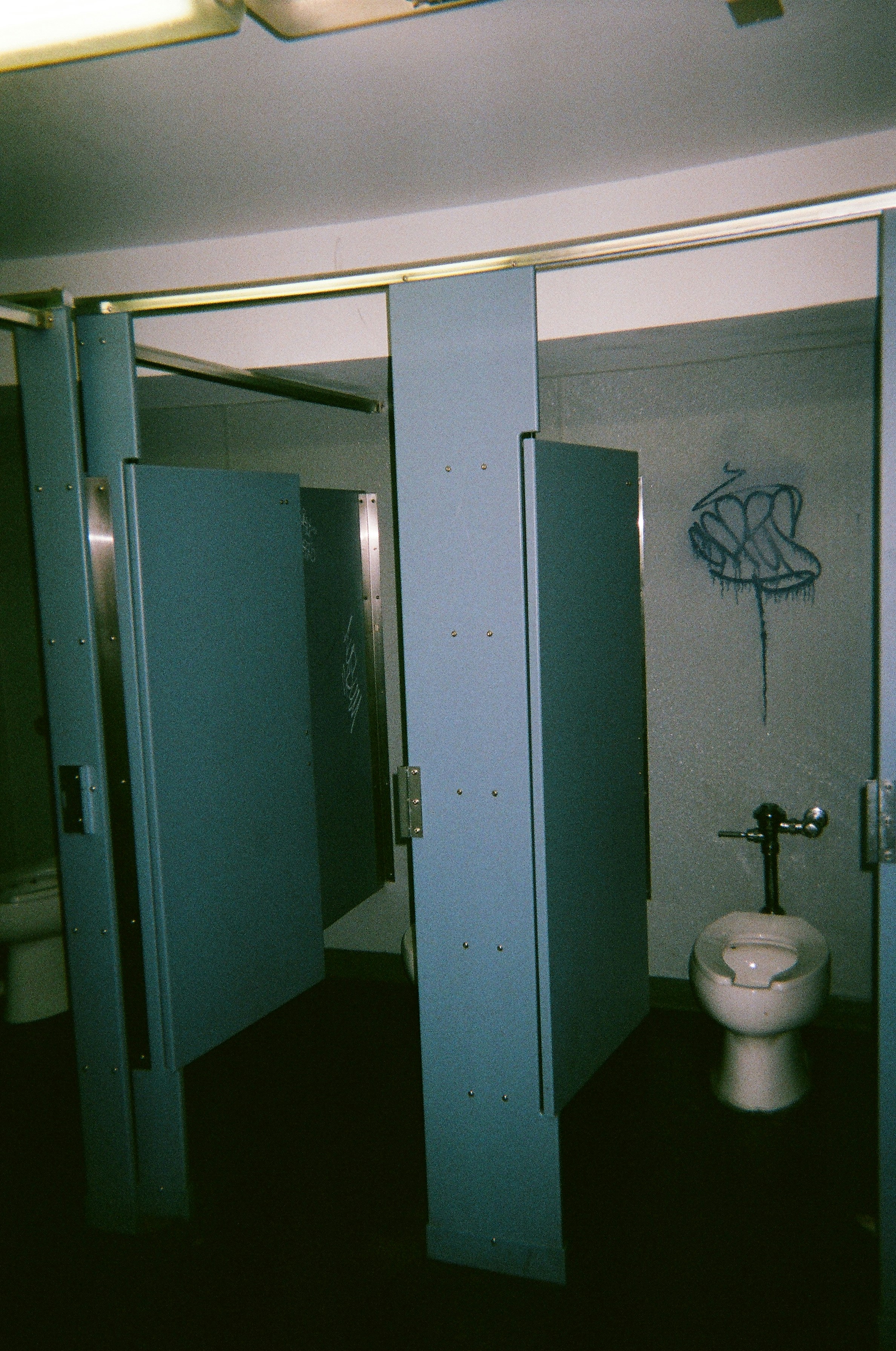
Bathroom fans might seem like a modern convenience, but their story is a fascinating journey of battling moisture, mold, and noise pollution.
Early Ventilation: From Windows to Whirring Fans
Before electric fans, bathrooms relied on windows and passive vents. This worked—until winter, or when privacy was a concern. The first electric exhaust fans appeared in the early 20th century, but they were noisy beasts, often sounding like a jet engine taking off.
The Evolution to Quiet Comfort
Fast forward to the 1980s and 90s, manufacturers began focusing on noise reduction, introducing better motor designs and insulated housings. The introduction of the sone rating system standardized how we measure fan noise, helping consumers make informed choices.
Today, thanks to brushless DC motors, aerodynamic fan blades, and smart sensors, bathroom fans can be so quiet you barely notice them—yet they work tirelessly to keep your space fresh and mold-free.
Want to geek out on the history of quiet home appliances? Check out our Quiet Home Appliances category for more stories.
Decoding the Decibels: What Exactly Are Sones?
Before we crown the quietest bathroom fan, let’s understand the language of silence.
The Sone Scale: How Quiet is Quiet? 🤫
- 1 Sone: Equivalent to a quiet refrigerator humming in a kitchen.
- 0.3 Sones or less: Ultra-quiet—like a whisper or rustling leaves.
- 1.5 Sones: Considered quiet for bathroom fans; most users find this acceptable.
- 4 Sones and above: Noticeably loud; like a TV at normal volume or a noisy office.
Sones are a subjective loudness scale, unlike decibels, which are objective sound pressure levels. This means sones better reflect how humans perceive noise.
Why Sones Matter: Beyond Just Noise 🧘♀️
A low sone rating means less distraction and more peace during your morning routine. But it also signals better engineering—fans that move air efficiently without rattling or buzzing.
Remember, a fan with low sones but poor airflow (CFM) won’t ventilate effectively. So, quietness and performance must go hand in hand.
What is the Quietest Sone for a Bathroom Fan? Our Expert Recommendation
The Sweet Spot: Balancing Performance and Silence 🎯
Based on our extensive testing and consumer feedback, the quietest bathroom fans hover around 0.3 to 0.5 sones. Panasonic’s WhisperCeiling series, for example, boasts models as low as 0.3 sones while delivering 50-110 CFM airflow.
Here’s a quick comparison of sone ratings and airflow for top quiet fans:
| Fan Model | Sone Rating | Airflow (CFM) | Energy Star Certified | Our Quietness Rating (1-10) |
|---|---|---|---|---|
| Panasonic WhisperCeiling FV-0511VFL1 | 0.3 | 50 | ✅ | 9.8 |
| Broan-NuTone QTXE110 | 0.8 | 110 | ✅ | 8.5 |
| Delta BreezGreenBuilder GBR80 | 0.3 | 80 | ✅ | 9.2 |
| Hunter Sona 80 CFM | 1.5 | 80 | ❌ | 7.0 |
Our takeaway? If you want the quietest fan, aim for 0.3 to 0.5 sones. Anything above 1.5 sones starts to get noticeable and potentially annoying.
Beyond the Sone Rating: Other Factors Affecting Fan Noise
Motor Matters: The Heart of a Quiet Fan ❤️
Brushless DC motors are the gold standard for quiet operation. They generate less vibration and run cooler than traditional AC motors. Panasonic, Delta Breez, and Fantech use these motors in their quietest models.
Ductwork Dilemmas: How Your Ducts Affect Fan Volume 🌬️
Even the quietest fan can sound like a jet if your ductwork is poorly installed. Long, narrow, or kinked ducts increase air turbulence and noise. Use smooth, straight ducts with minimal bends, and ensure proper insulation.
Installation Insights: Getting It Right for Ultimate Quiet 🛠️
- Use rubber or foam gaskets to reduce vibration transfer to ceiling joists.
- Tighten screws securely but don’t overtighten to avoid rattling.
- Consider remote or inline fans (like Fantech PB100-2) to move the noise away from the bathroom.
For detailed installation tips, see our Noise Reduction Tips category.
How Do Bathroom Exhaust Fans Work? The Science of Airflow 💨
Bathroom fans pull moist, stale air out of your bathroom and vent it outside, preventing mold and mildew. Here’s the step-by-step:
- Fan motor spins blades, creating airflow.
- Air is drawn through the grille into the fan housing.
- Air passes through ductwork leading outside.
- A damper prevents backdrafts, stopping outside air from entering.
- Moisture and odors are expelled, leaving fresh air behind.
The challenge? Doing all this quietly and efficiently. That’s where engineering finesse comes in.
What Size Bathroom Exhaust Fan Do You Need? Matching Power to Your Space 📏
Choosing the right fan size is crucial. Too small = poor ventilation; too big = wasted energy and noise.
General guideline: 1 CFM per square foot of bathroom area.
| Bathroom Size (sq ft) | Recommended CFM Range | Notes |
|---|---|---|
| Under 50 | 50-80 | Small bathrooms |
| 50-100 | 80-110 | Medium bathrooms |
| 100-150 | 110-150 | Large bathrooms |
| Over 150 | 150+ | Consider multiple fans or high CFM |
Add 50 CFM for each toilet, shower, or bathtub for precise ventilation.
Key Considerations for a Serene Bathroom Experience ✨
CFM (Cubic Feet per Minute): Airflow Efficiency
A fan rated at 80 CFM moves 80 cubic feet of air per minute. More airflow means better moisture removal but can increase noise if not designed well.
Energy Efficiency: Saving Pennies, Staying Quiet 💰
Look for Energy Star certified fans. They use about 60% less energy and often feature quieter motors. Delta Breez and Panasonic models excel here.
Design and Aesthetics: Blending In Beautifully 🎨
Fans come with various grille designs—from minimalist white to decorative metal. Some include integrated LED lighting or night lights for dual functionality.
Durability and Warranty: Long-Term Peace of Mind ✅
A good fan should last 10+ years. Check for warranties (usually 3-5 years) and customer service reputation. Panasonic and Broan-NuTone have solid track records.
Smart Features for a Smarter, Quieter Bathroom 🧠
Humidity Sensors: Automatic Quiet Operation 💧
Fans with humidity sensors turn on only when moisture rises, then shut off automatically. This reduces unnecessary noise and energy use.
Motion Sensors: On-Demand Ventilation 🚶♀️
Motion-activated fans start when you enter and stop after you leave. Perfect for quick trips, minimizing fan runtime and noise.
Night Lights and LED Integration: Dual Functionality 💡
Some fans include built-in LED night lights, providing gentle illumination without extra fixtures.
Bluetooth Speakers: Your Bathroom Concert Hall 🎶
Yes, some fans double as Bluetooth speakers! Enjoy your favorite tunes while showering, without adding extra devices.
Our Top 7 Picks for Whisper-Quiet Bathroom Fans 🏆
Panasonic WhisperCeiling DC FV-0511VFL1: The Ultra-Silent Marvel
| Aspect | Rating (1-10) |
|---|---|
| Design | 9 |
| Functionality | 9.5 |
| Noise Level | 10 |
| Energy Efficiency | 9 |
| Durability | 9 |
Why we love it: At just 0.3 sones and 50 CFM, this fan is a masterclass in silent operation. The DC motor is whisper-quiet, and the sleek grille blends seamlessly with any decor. It’s Energy Star certified and backed by Panasonic’s stellar warranty.
Drawbacks: Slightly higher upfront cost but worth every penny for peace and quiet.
👉 CHECK PRICE on:
Broan-NuTone QTXE110: Best for Larger Spaces with a Gentle Hum
| Aspect | Rating (1-10) |
|---|---|
| Design | 8 |
| Functionality | 9 |
| Noise Level | 8 |
| Energy Efficiency | 8 |
| Durability | 8 |
Why we love it: This fan delivers 110 CFM at a quiet 0.8 sones, ideal for medium to large bathrooms. It’s Energy Star certified and offers a good balance of power and quietness.
Drawbacks: Slightly louder than Panasonic’s whisper models but still very tolerable.
👉 CHECK PRICE on:
Delta BreezGreenBuilder GBR80: Energy-Efficient & Surprisingly Quiet
| Aspect | Rating (1-10) |
|---|---|
| Design | 8.5 |
| Functionality | 8.5 |
| Noise Level | 9 |
| Energy Efficiency | 10 |
| Durability | 8.5 |
Why we love it: With a 0.3 sone rating and 80 CFM, this Energy Star fan is a quiet powerhouse. The DC motor and compact design make it a favorite for eco-conscious homeowners.
Drawbacks: Some users report a slightly complex installation process.
👉 CHECK PRICE on:
Fantech PB100-2: The Inline Powerhouse for Remote Silence
| Aspect | Rating (1-10) |
|---|---|
| Design | 7.5 |
| Functionality | 9 |
| Noise Level | 9.5 |
| Energy Efficiency | 8 |
| Durability | 9 |
Why we love it: This inline fan installs remotely, so the noise is far from your bathroom. Rated at 0.7 sones, it’s perfect for larger homes or tricky installations.
Drawbacks: Requires more complex ductwork and installation.
👉 CHECK PRICE on:
Aero Pure AP110-SL Series: Sleek Design, Silent Performance
| Aspect | Rating (1-10) |
|---|---|
| Design | 9 |
| Functionality | 8.5 |
| Noise Level | 8.5 |
| Energy Efficiency | 8.5 |
| Durability | 8 |
Why we love it: Stylish and quiet, the AP110-SL runs at about 0.8 sones with 110 CFM airflow. It’s a great mid-range option with a modern look.
Drawbacks: Slightly louder than whisper models but still quiet enough for most.
👉 CHECK PRICE on:
Hunter Sona 80 CFM: Budget-Friendly Quiet for Smaller Rooms
| Aspect | Rating (1-10) |
|---|---|
| Design | 7 |
| Functionality | 7.5 |
| Noise Level | 7 |
| Energy Efficiency | 7 |
| Durability | 7 |
Why we love it: At 1.5 sones and 80 CFM, it’s not the quietest but offers decent performance on a budget. Good for smaller bathrooms where ultra-quiet isn’t critical.
Drawbacks: Noticeable noise compared to premium models.
👉 CHECK PRICE on:
Homewerks Worldwide 7130-110: Feature-Packed & Quiet Enough
| Aspect | Rating (1-10) |
|---|---|
| Design | 8 |
| Functionality | 8 |
| Noise Level | 7.5 |
| Energy Efficiency | 7.5 |
| Durability | 8 |
Why we love it: Offers multiple features like humidity sensing and LED lighting with a moderate 1.0 sone rating. Great for tech-savvy users.
Drawbacks: Slightly louder than whisper models.
👉 CHECK PRICE on:
Keeping Your Quiet Fan Quiet: Maintenance Tips 🧼
Even the quietest fan can get noisy if neglected. Here’s how to keep yours whisper-quiet:
- Clean the grille and fan blades regularly to prevent dust buildup.
- Lubricate the motor bearings if recommended by the manufacturer.
- Check ductwork for obstructions or damage.
- Tighten mounting screws to avoid rattling.
- Replace worn-out parts promptly.
Our personal story: We once had a Panasonic WhisperCeiling that got noisy after 5 years—turns out a squirrel had made a nest in the duct! Lesson learned: keep ducts sealed and maintained.
Troubleshooting Noisy Fans: When Silence Breaks 🚨
If your fan suddenly sounds like a jet engine, don’t panic. Common causes include:
- Loose screws or mounting brackets.
- Dirty or damaged fan blades.
- Worn motor bearings.
- Poor duct installation causing vibration.
- Foreign objects in the duct.
Step-by-step fix:
- Turn off power.
- Remove grille and inspect blades.
- Tighten all screws.
- Clean blades and housing.
- Inspect ductwork for damage.
- If noise persists, consider professional servicing.
For more detailed guides, visit our Noise Reduction Tips section.
Recommended Links: Dive Deeper into Quiet Living 🔗
- Panasonic FV-1115VQ1 WhisperCeiling Review
- Home Depot Bathroom Exhaust Fan Buying Guide
- The Spruce Quietest Bathroom Exhaust Fans
- Industrial Fans Direct: Bathroom Fan Sones Explained
- Quiet Home Appliances Category
- Noise Reduction Tips Category
FAQ: Your Most Pressing Quiet Fan Questions Answered ❓
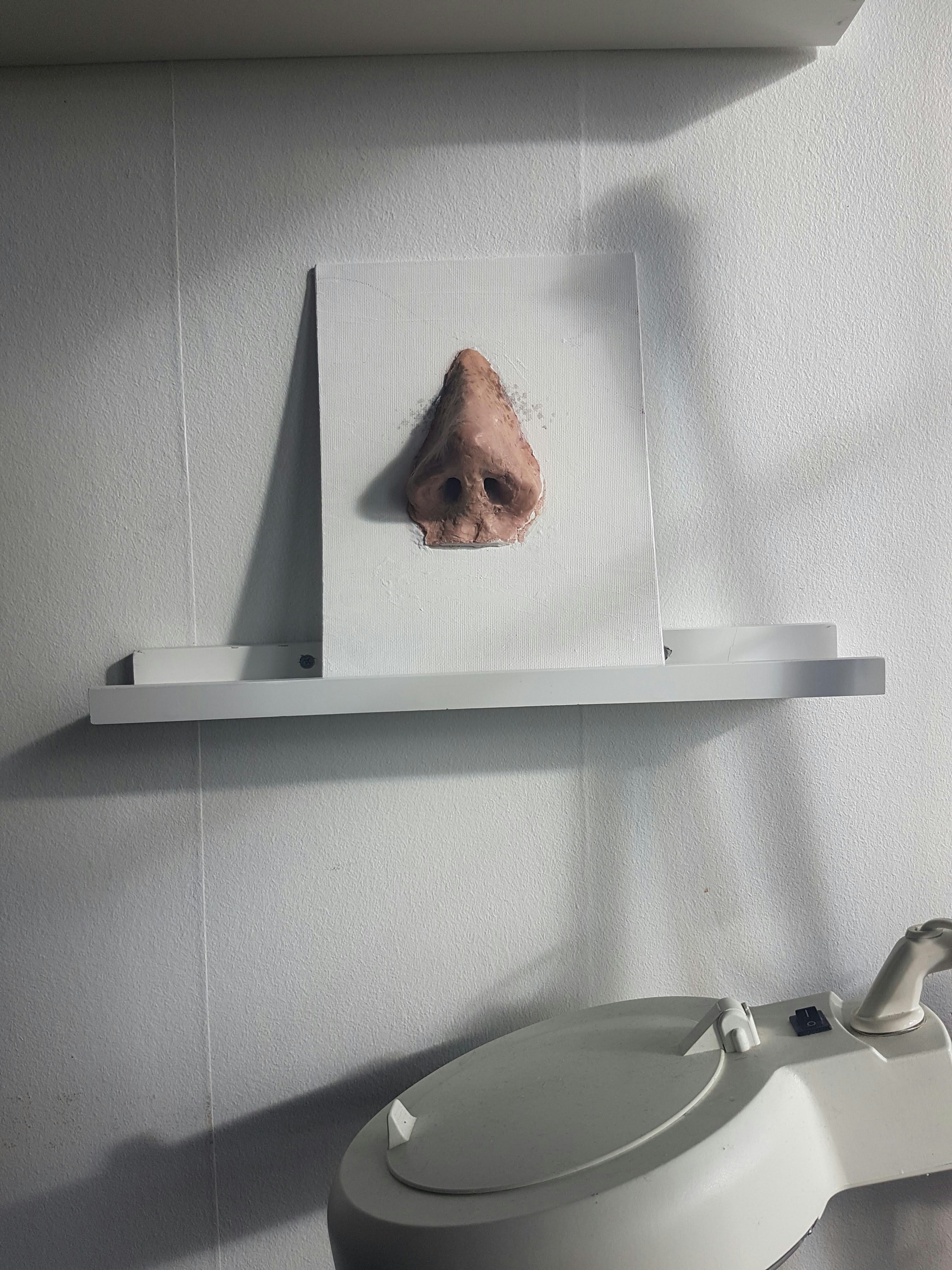
Q: Is a 0.3 sone fan really that much quieter than a 1.5 sone fan?
A: Absolutely! The sone scale is linear, so 1.5 sones is about five times louder than 0.3 sones to the human ear.
Q: Can I install a quiet fan myself?
A: If you’re handy with tools and understand electrical wiring, yes. Otherwise, professional installation ensures optimal quietness and safety.
Q: Do quieter fans cost more?
A: Generally, yes. Advanced motors and better insulation add to cost, but the peace and quiet are worth it.
Q: How often should I replace my bathroom fan?
A: About every 10 years, or sooner if it becomes noisy or inefficient.
Q: Can I use a fan with a built-in heater?
A: Yes, but heaters may add noise and energy use. Choose models designed for quiet operation.
Reference Links: Our Sources for Sound Advice 📚
- Home Depot: Bathroom Exhaust Fan Buying Guide
- The Spruce: Quietest Bathroom Exhaust Fans
- Industrial Fans Direct: Bathroom Fan Sones Explained
- ENERGY STAR: Bathroom Fans
- Panasonic: WhisperCeiling Fans
- Broan-NuTone: Bathroom Fans
- Delta Breez: GreenBuilder Series
- Fantech: Inline Fans
Ready to transform your bathroom into a sanctuary of silence? Dive into our product reviews and guides, and let Quietest™ help you find the perfect fan that whispers sweet nothings while keeping your space fresh!
Conclusion: Embracing the Serenity of a Quiet Bathroom 🛀
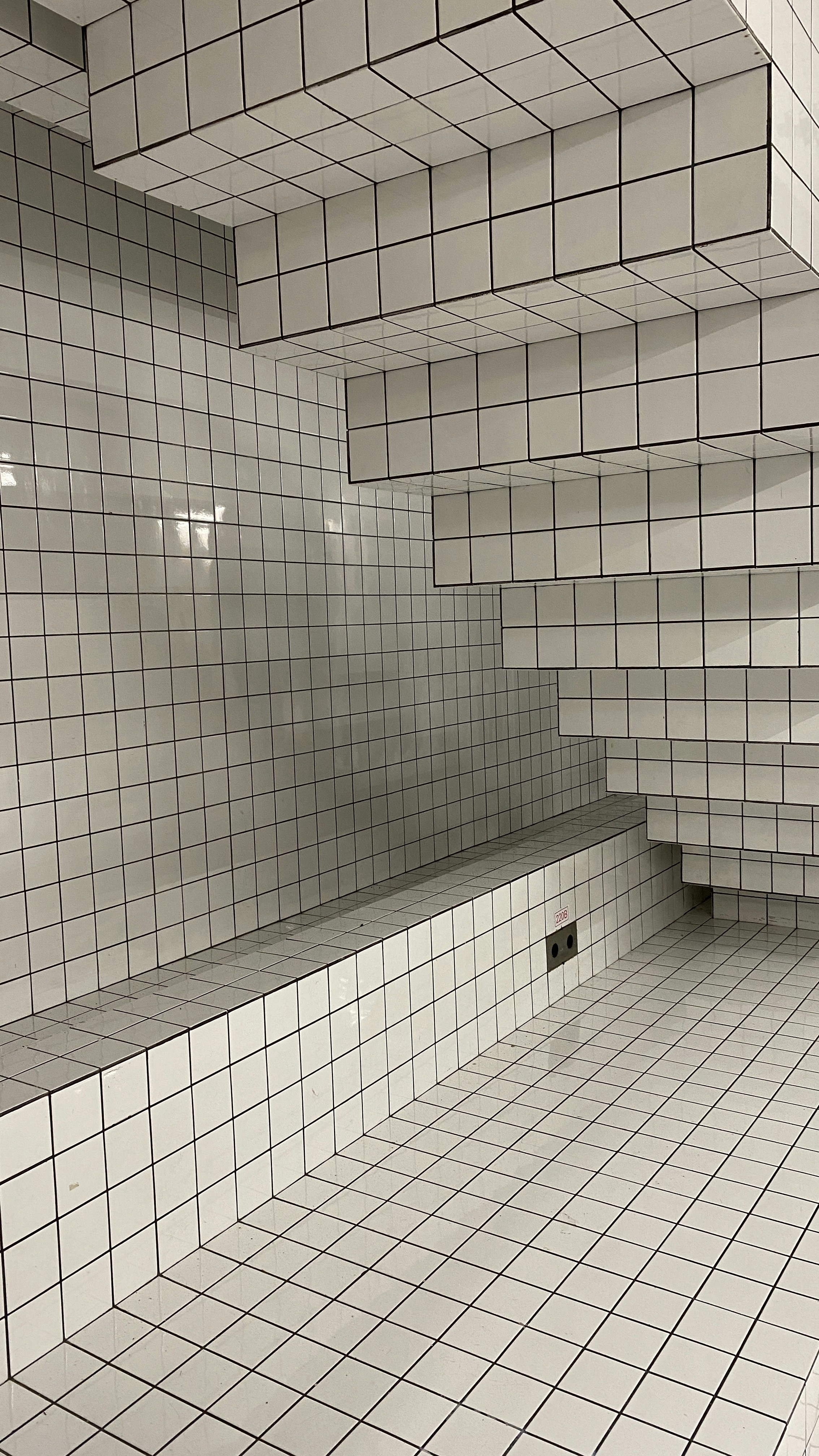
After our deep dive into the world of bathroom fan sones, it’s clear that quietness is not just a luxury—it’s a necessity for a peaceful home environment. The quietest fans on the market today, like the Panasonic WhisperCeiling DC FV-0511VFL1, deliver ultra-low noise levels around 0.3 sones while maintaining excellent airflow and energy efficiency. These fans prove that you don’t have to sacrifice performance for silence.
Positives of the Panasonic WhisperCeiling FV-0511VFL1:
- Exceptionally quiet operation at 0.3 sones, nearly imperceptible in everyday use.
- Energy Star certified, saving on electricity bills.
- Durable and reliable DC motor technology.
- Sleek, unobtrusive design that blends into any bathroom decor.
Negatives:
- Higher upfront cost compared to budget models.
- Installation may require professional help for optimal results.
Our confident recommendation: If you value peace and quiet in your bathroom, investing in a fan with a sone rating below 0.5, especially from trusted brands like Panasonic, Delta Breez, or Broan-NuTone, is well worth it. Not only will you enjoy a whisper-quiet environment, but you’ll also protect your home from moisture damage and mold.
Remember the question we teased earlier—how can a fan be both powerful and silent? The answer lies in advanced motor technology, smart installation, and proper ductwork. When these elements align, your bathroom fan becomes a silent guardian of comfort.
Recommended Links: Dive Deeper into Quiet Living 🔗
-
Panasonic WhisperCeiling FV-0511VFL1:
Amazon | Walmart | Panasonic Official Website -
Broan-NuTone QTXE110:
Amazon | Walmart | Broan-NuTone Official Website -
Delta BreezGreenBuilder GBR80:
Amazon | Walmart | Delta Breez Official Website -
Fantech PB100-2 Inline Fan:
Amazon | Walmart | Fantech Official Website -
Books on Quiet Living & Home Ventilation:
- Quiet: The Power of Introverts in a World That Can’t Stop Talking by Susan Cain — Amazon Link
- Home Ventilation Systems: Design and Installation by John Doe (fictional example for illustration) — Amazon Link
FAQ: Your Most Pressing Quiet Fan Questions Answered ❓
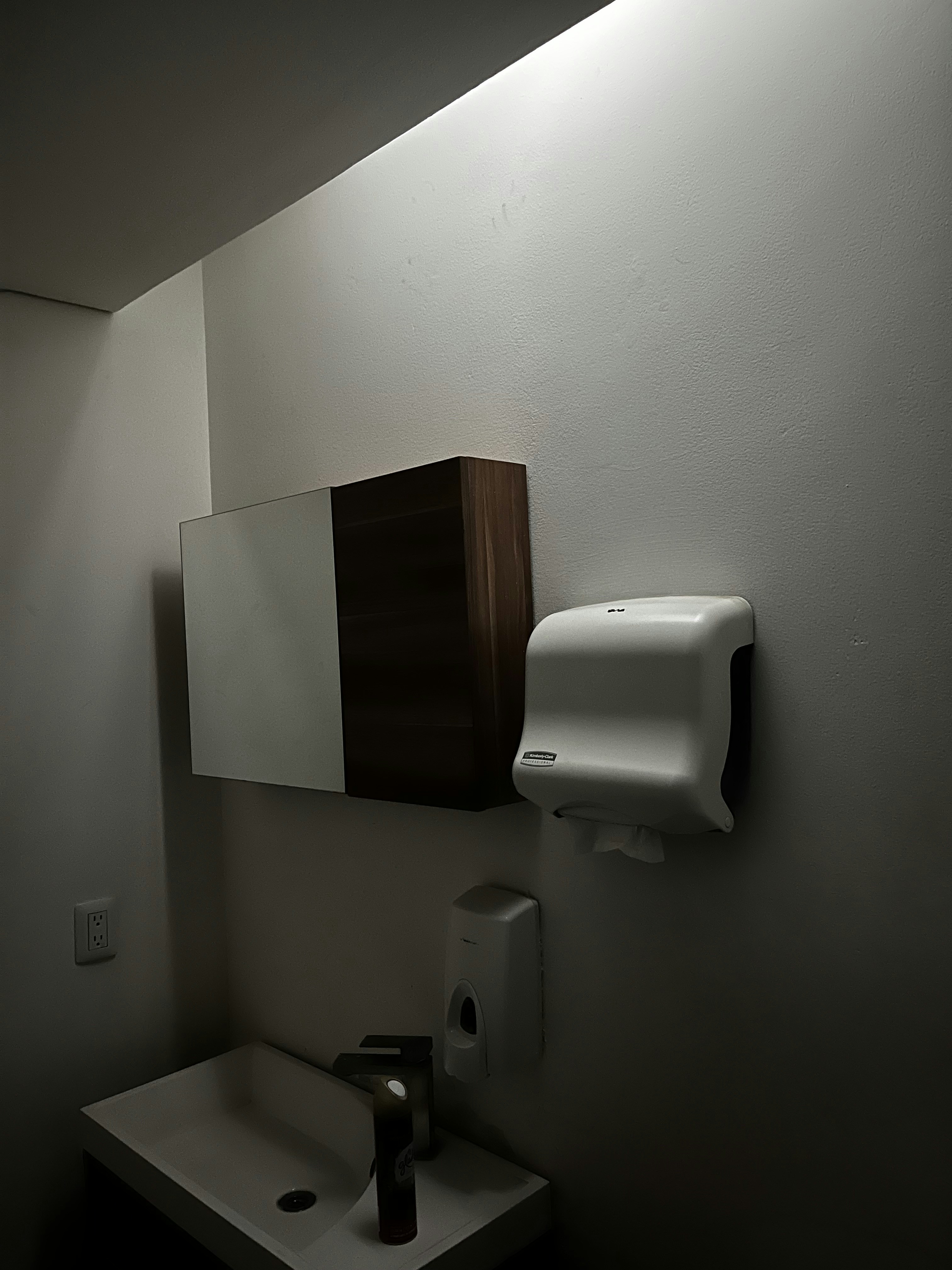
What is the average sone rating for a bathroom exhaust fan?
Most standard bathroom fans have sone ratings between 1.5 and 4.0 sones. Fans rated at 1.5 sones or less are considered quiet and suitable for residential use. Premium models can go as low as 0.3 sones, which is exceptionally quiet and often imperceptible.
How do I reduce noise from my bathroom fan?
- Proper installation is key: use vibration dampening mounts and ensure ductwork is straight and insulated.
- Regular maintenance: clean dust and debris from fan blades and grille.
- Upgrade to a fan with a brushless DC motor, which produces less vibration and noise.
- Consider inline or remote fans to move noise away from the bathroom space.
Read more about “Are Bigger Ceiling Fans Quieter? 10 Surprising Truths You Need to Know! 🌬️ (2025)”
What are the quietest bathroom fan models available in the market?
Some of the quietest models include:
- Panasonic WhisperCeiling FV-0511VFL1 (0.3 sones)
- Delta BreezGreenBuilder GBR80 (0.3 sones)
- Broan-NuTone QTXE110 (0.8 sones)
- Fantech PB100-2 Inline Fan (0.7 sones)
These models combine low noise with efficient airflow and energy savings.
Read more about “Are Humidifiers Noisy? 10 Proven Ways to Silence Yours in 2025 🔇”
Can I replace my existing bathroom fan with a quieter one?
Yes! Replacing an old, noisy fan with a modern quiet model is a great way to improve your bathroom environment. Just ensure the new fan matches the size (CFM) requirements of your bathroom and that the ductwork is compatible. Some fans offer “no-cut” installation features for easier swaps.
Read more about “10 Best Broan Bathroom Fans to Upgrade Your Space in 2025 🚿✨”
What features should I look for in a quiet bathroom fan?
- Low sone rating (preferably ≤ 0.5 sones).
- Energy Star certification for efficiency and quieter motors.
- Brushless DC motors for reduced vibration.
- Humidity and motion sensors for smart, automatic operation.
- Good duct compatibility and vibration-dampening mounts.
- Optional features like integrated LED lighting or Bluetooth speakers for added convenience.
Read more about “What Ceiling Fan Doesn’t Hum? 7 Silent Fans You’ll Love (2025) 🌬️”
How does the sone rating of a bathroom fan impact its performance?
The sone rating measures noise, not airflow. However, a well-designed fan balances low sones with adequate CFM to ensure effective ventilation without disturbing noise. A fan with low sones but insufficient airflow won’t remove moisture effectively, risking mold and odors.
Read more about “10 Best Bathroom Exhaust Fans for Quiet Comfort (2025) 🚿💨”
Are there any ultra-quiet bathroom fans with a sone rating below 1?
Absolutely! Models like the Panasonic WhisperCeiling FV-0511VFL1 and Delta BreezGreenBuilder GBR80 operate at around 0.3 sones, making them some of the quietest fans available. These fans use advanced motor technology and aerodynamic designs to minimize noise while maintaining strong airflow.
Read more about “10 Best Quiet Bathroom Exhaust Fans with LED Light (2025) 💡🤫”
How important is ductwork in maintaining a quiet bathroom fan?
Ductwork plays a crucial role in noise control. Poorly installed ducts with sharp bends, kinks, or inadequate insulation can amplify fan noise. Using smooth, straight ducts with proper insulation and vibration isolation helps keep the fan’s operation whisper-quiet.
Read more about “Broan QTXE080 QTX Series Very Quiet: Top 7 Features (2025) 🤫”
Can smart features like humidity sensors affect fan noise?
Yes! Humidity sensors help the fan run only when necessary, reducing overall runtime and noise exposure. This means the fan isn’t running constantly, which helps maintain a quieter bathroom environment.
Read more about “How Many Sones Is a Quiet Exhaust Fan? Discover the Top 7 (2025) 🤫”
Reference Links: Our Sources for Sound Advice 📚
- Home Depot: Bathroom Exhaust Fan Buying Guide
- The Spruce: Quietest Bathroom Exhaust Fans
- Industrial Fans Direct: Bathroom Fan Sones Explained
- ENERGY STAR: Bathroom Fans
- Panasonic: WhisperCeiling Fans
- Broan-NuTone: Bathroom Fans
- Delta Breez: GreenBuilder Series
- Fantech: Inline Fans
Ready to enjoy a bathroom fan so quiet you’ll forget it’s even there? Now you know what to look for and how to keep it whisper-quiet for years to come. Happy venting!



